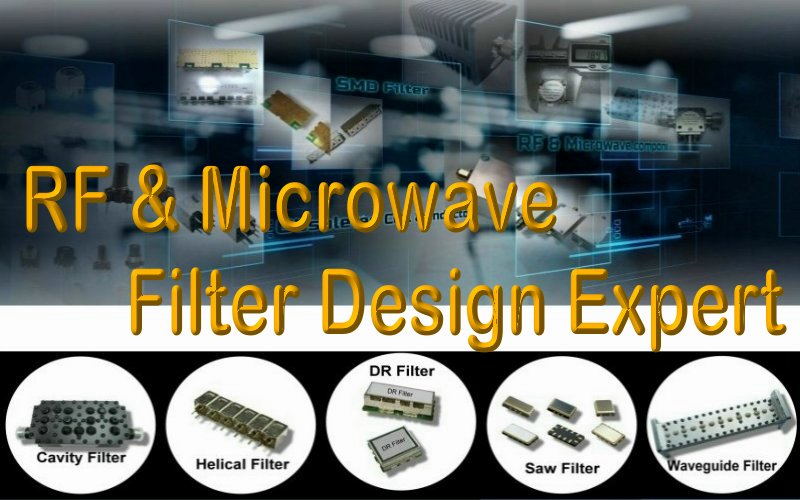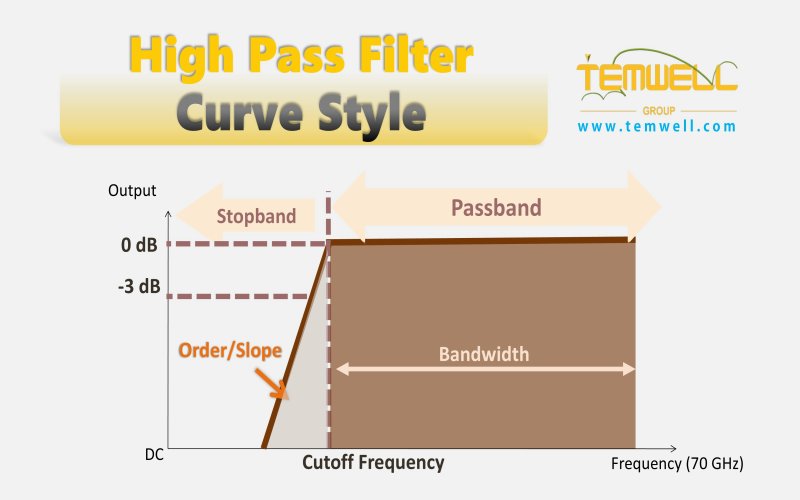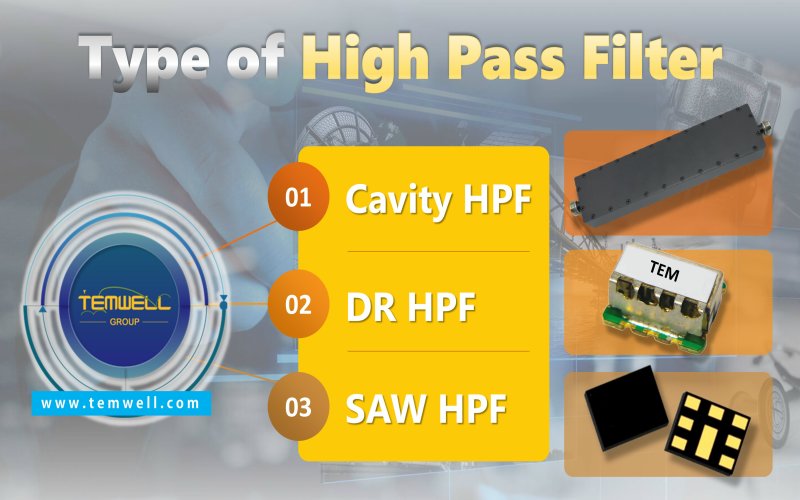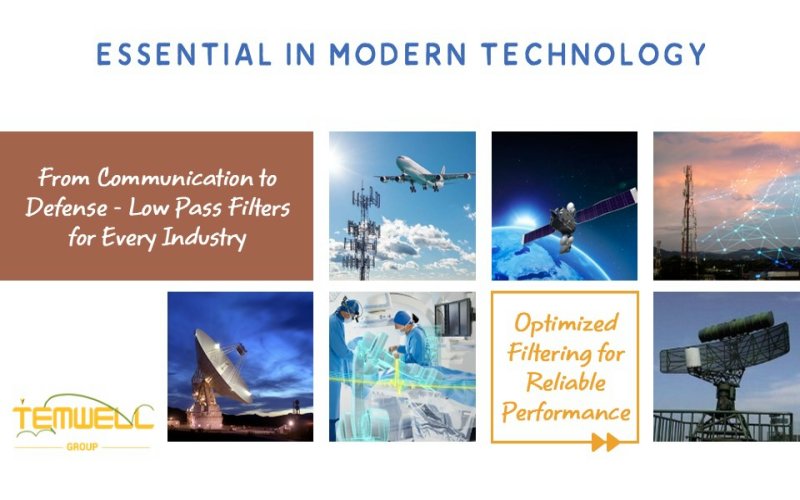What is HPF Filter (High-pass Filter)?

What is High Pass RF Filter (HPF) Filter?
HPF Filter is the abbreviation of High-pass RF Filter. It is an electronic component that allows high-frequency signals to pass through while suppressing or removing low-frequency signals. Simply put, its function is to enhance the high-frequency part and reduce low-frequency noise or interference to make the signal clearer.
For example, when a radio device receives signals, it may be affected by 50/60Hz power noise or other low-frequency interference, resulting in signal quality degradation. Through the high-pass filter, these low-frequency noises can be effectively filtered out, making the received radio waves clearer and improving the communication effect. Because it can effectively reduce low-frequency interference and improve signal quality, the high-pass rf filter is an essential component in wireless communication, audio equipment, and various electronic devices.
Here are some common real-life applications:
1. Audio equipment:
Used to remove low-frequency noise (such as wind or low-frequency roar) to improve sound quality, especially during music playback and speech.
2. Wireless communication:
to filter out unnecessary low-frequency interference and ensure the received signal is clear and stable.
3. Video processing:
Enhances image edges and details while removing low-frequency noise to improve image quality.
4. Medical equipment:
Used in biological signal monitoring, such as electrocardiograms (ECG) and electroencephalograms (EEG), to eliminate low-frequency interference (e.g., baseline drift) for clearer signal observation.
5. Music production:
Helps clean up master recordings by removing unwanted low frequencies, adding more depth and clarity to the music.
6. Environmental Noise Control:
Reduces ambient noise (such as traffic noise) to create a quieter environment.
7. Computer audio processing:
Used to improve the clarity of sound effects, especially in games and multimedia applications.
Performance parameters of HPF Filter
The main parameters of a High-pass RF Filter (HPF Filter) include the following:
1. Cutoff Frequency (fc)
The cutoff frequency is the frequency at which the high-pass filter begins to significantly attenuate low-frequency signals. It determines the lowest frequency that the filter allows the signal to pass through, and signals below this frequency will be gradually suppressed.
2. Roll-off Rate
The roll-off rate describes how quickly the filter attenuates unwanted low-frequency signals as it transitions from the passband to the stopband. A higher roll-off rate indicates a steeper attenuation in the transition region, effectively reducing unwanted frequencies.
3. Passband
The passband refers to the frequency range where the high-pass filter allows signals to pass through without significant attenuation. It typically starts from the cutoff frequency and extends through the filter's effective operating range.
4. Stopband
The stopband is the frequency range where the high-pass filter effectively suppresses signals. Within this range, signals are significantly attenuated. This parameter determines the filter's ability to isolate signals. A wider stopband results in better low-frequency noise rejection and improved filtering performance.
5. Loss
Loss indicates the degree of energy loss after a signal passes through a filter and is usually expressed in decibels (dB). Lower losses mean more efficient energy transfer.
6. Power Handling Capacity
Power handling capability refers to the maximum power that a high-pass filter can withstand, usually expressed in watts (W).
The features of HPF Filter:
There has some characteristics of the High Pass RF Filter (HPF Filter) make it a crucial component in many applications. Here are some of the key features of HPF in practical applications:
1. Filtering Low-Frequency Noise
One of the primary features of a high-pass filter is its ability to effectively filter out low-frequency noise. This makes it highly useful in applications where unwanted low-frequency signals need to be removed. In wireless communication, for example, it can eliminate low-frequency noise from power sources (such as 50Hz or 60Hz power interference), ensuring signal stability.
2. Improve the clarity of high-frequency signals
HPF Filter can enhance the clarity of high-frequency signals, which is very important in radar, sonar, image processing and other systems. These systems rely on high-frequency signals to perform precise measurements or detection. Therefore, a filter that can effectively isolate low-frequency interference is needed.
3. Reduce system complexity
Since the HPF Filter can effectively remove low-frequency noise, it can simplify the design of the system. Many systems can easily filter out unwanted low frequency content by adding a HPF Filter at the input. No additional processing or filters are required. This makes system design more straightforward and efficient.
What kinds of HPF Filter are there?
1. Cavity High-Pass Filter (Cavity HPF Filter)
A cavity high-pass filter (Cavity HPF Filter) is a type of filter that utilizes a hollow cavity structure to filter signals. It allows high-frequency signals to pass while blocking low-frequency signals. In radio or communication systems, this type of filter helps remove unwanted low-frequency noise, making the received signal clearer and more stable. The hollow cavity structure of the cavity high-pass filter can provide high filtering effect and can withstand higher power, which makes it excel in high-frequency applications. Its design typically reduces attenuation loss and offers better frequency selectivity, allowing signals to pass through more precisely. Cavity filters are widely used in radio communications, radar systems, and other applications requiring stable high-frequency signals.
2. Dielectric Resonator HPF Filter
Dielectric resonator high-pass filter (DR HPF Filter) is a filter that uses special dielectric materials to filter signals, allowing high-frequency signals to pass through while blocking low-frequency noise, resulting in clearer and more stable signals. Compared with other high-pass filters, DR HPF Filter has the advantages of small size, high frequency stability and low loss, and is suitable for use in radio, radar and communication systems. Its features include a small design that enables efficient filtering in limited spaces; high frequency stability that reduces the impact of environmental changes on the signal; low insertion loss that reduces signal attenuation and maintains signal quality; and a high-quality factor (Q value) that accurately selects the desired frequency and reduces interference. These characteristics make DR HPF Filter an important component in fields such as satellite communications, navigation systems and high-frequency wireless technology, ensuring signal accuracy and stability.
3. Surface Acoustic Wave High Pass Filter (SAW HPF Filter)
A surface acoustic wave high-pass filter (SAW HPF Filter) is an electronic component that utilizes the property of sound waves propagating along the surface of a solid to filter signals, allowing high-frequency signals to pass through while blocking low-frequency noise, resulting in clearer and more stable signals. It has the advantages of small size, high precision and low insertion loss, so it is widely used in mobile phones, wireless communication equipment and satellite navigation systems. Since no large inductor or capacitor components are required, SAW HPF Filter is small and lightweight, suitable for microelectronic devices. It also has high-frequency selectivity and can accurately filter signals in a specific frequency range, improving communication quality. In addition, the advantages of low cost and large-scale production make it an important component in modern wireless communication technology. However, SAW HPF Filters have lower power handling capabilities compared to cavity filters and dielectric resonator filters, making them suitable for low-power applications such as cell phones and small wireless devices, but not for high-power communication systems. With these characteristics, SAW HPF Filter plays a key role in the field of high-frequency signal processing.
What product can HPF Filter be used for?
High-pass filter (HPF Filter) plays an important role in wireless communication equipment. It can effectively eliminate low-frequency noise, ensure the stable transmission of high-frequency signals, improve communication quality, and make long-distance wireless transmission more accurate and reliable. Here are some common applications:
1. Audio equipment
HPF Filter is used in devices such as microphones, sound amplification systems, and high-frequency speakers. It removes low-frequency noise, like wind or vibration sounds, ensuring clearer speech and music. Additionally, live broadcast and recording equipment also use HPF Filter to reduce background noise and enhance sound quality.
2. Radar and navigation systems
HPF Filter is widely used in aviation and military radars, as well as GPS positioning equipment. It can filter out low-frequency interference and improve the accuracy of high-frequency signals, making radar detection more accurate and GPS positioning more precise.
3. Medical devices
HPF Filter is primarily used in electrocardiogram (ECG) and ultrasound equipment. It effectively removes low-frequency interference caused by power sources, making ECG signals clearer and improving the resolution of ultrasound images, helping doctors make more accurate diagnoses.
4.Industrial and electronic testing equipment
HPF Filter is used in signal analyzers and wireless sensors. It removes low-frequency noise, ensuring more accurate high-frequency measurement data, stabilizing sensor operations, and improving the testing accuracy and performance of equipment.

Products and Services Provided by Temwell
Temwell/Temstron design team has strong R&D capabilities, specializing in the design and manufacture of various RF filters, and providing customized RF filter solutions based on customer needs. With over 27 years of experience in RF filter design, we are your reliable partner in the development and design process.
If your team has any needs for RF HPF, please feel free to contact us and get free consultation services so that we can provide you with the best solution.
Subscribe to us on Facebook for the latest product news.




















